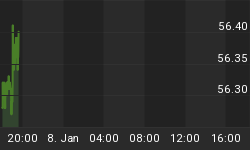A few months ago, the Bank of Canada released a very interesting study titled «Trends in Retail Payments and Insights». Like everywhere in the Western world, debit cards and credit cards are widely used and these forms of electronic payment continue to growth in popularity. The combined volume and value of debit and credit card transactions have grown at average annual rates of 10 % and 11 %, respectively, over the past five years. On a per capita basis, debit and credit card use in Canada is relatively high by international standards.
In 2004, Canadians made, on average, 88 debit card transactions per person with an average value of 44 CAN$. Two thirds of Canadians use an ATM machine at least once a week. Canadians also made, on average, 55 credit card transactions per person, with an average value of over 100 CAN$.
This survey also shows that bank notes are still an important method of payment in the Canadian economy. Moreover, bank notes are perceived as a store of value by Canadians. In 2005, there were more than 1.5 billion bank notes in circulation for a total estimated value of 43 billion Canadian dollars or around 1700 CAN$ for every Canadian.
In the 1995-2005's period, value and volume of bank notes in circulation grew at average rates of 5 % and 3 % per annum, respectively. The growth in real terms over the past 20 years is faster than the population growth. Since 1985, the volume of bank note has represented 3 % to 3.4 % of Canadian GDP. In 2005, it stood at 3.2 % of GDP.
When asked about the total value of bank notes presently held in their purse or wallet, the average Canadian stated having about 70 CAN$. It seems that cash is the preferred method for making purchases of less than 25 CAN$, whereas debit cards are preferred for purchases between 25 CAN$ and 100 CAN$ and credit cards for purchases greater than 100 CAN$. However, a whopping 25 % of respondents reported having no bank notes in their possession at the time they were surveyed.
So to sum it up: there is approximately 1700 CAN$ in bank note available for every Canadian, the average Canadian holds about 70 CAN$ in his wallet at any given time and 25 % of them have no bank notes in their possession. It looks to us like a very nice set of conditions to perpetuate a serious banking crisis.
This situation illustrates the fact that the Canadian population, as a whole, is very ill-prepared in case of an eventual bank panic or, more likely, a period of sharp price increases. There does not seem to be any contingency plan in place for most people if things were to go sour even for a short period of time.
Fiat paper considered as a store of value is the second crucial mistake. Leaving large amount of currency in a checking account is always a bad idea. In case of an acute crisis, like the one Argentina experienced a few years ago, most of the bank notes falsely deemed by the population as a store of value, could be redeemed as in fact a value drain. Assuming that we would experience a credit crunch similar to the past American and European bank panics, people would scramble to claim their fiat paper as they used to claim their gold and silver for their worthless bank notes.
But these claims are nowadays worthless. Like Bank notes which used to be paper receipts for gold in storage, we now have credit, in all its forms, and ATM transactions which are considered as electronic receipts for bank notes in storage. But again, like in the past, those who held the bank notes and created the credit have taken notice that bank notes are seldom claimed. The temptation to issue more electronic receipts (namely easy credit) therefore has become impossible to resist making the electronic printing press work overtime as easy credit flood the market.
This scheme will obviously keep working as long as everyone does not claim their fair share of the available bank notes. But in a more extreme case where bank assets would need or had to be frozen even for a very short period of time to sustain and/or adjust to a systemic shock, it looks like transactions would become very problematic if not near impossible since bank notes are relatively scarce among individuals. And what about the consequences among businesses?
With an amount of 1700 CAN$ deemed available per Canadian, one could theorize about the feasibility of an individual helicopter drop at least on a temporary basis in order to allow transactions to continue. Not a bright perspective if you ask us.
















